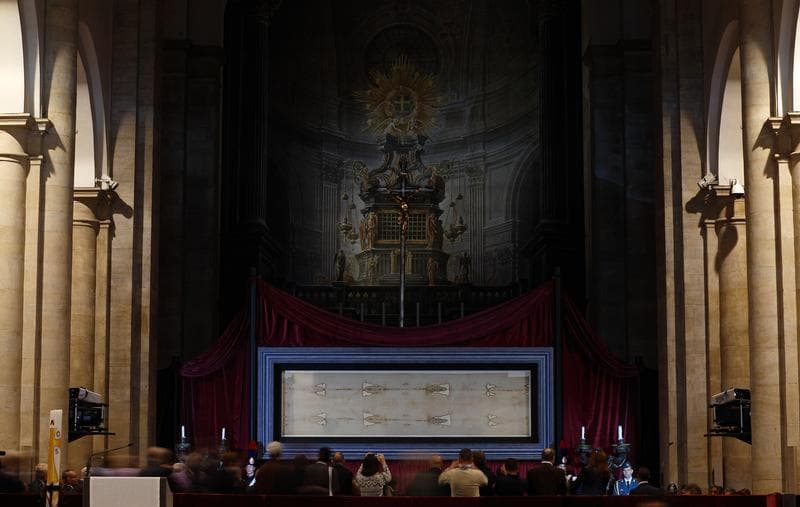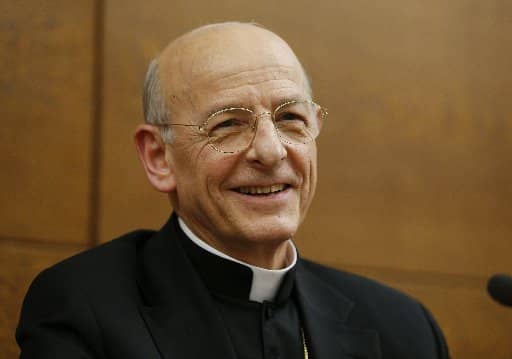LEICESTER, United Kingdom – Checking bloodstains, re-enacting crimes, hitting the lab to check the results: It has been the bread-and-butter of police procedurals since “CSI” first premiered in 2000.
Now it has been used to test what some say is the surviving evidence of the most important killing in history: The Shroud of Turin, which many people purport to be the burial cloth of Jesus Christ.
Dr. Matteo Borrini, a forensic anthropologist at the Liverpool John Moores University in England, used bloodstain pattern analysis on the Shroud of Turin.
Together with fellow researcher Luigi Garlaschelli, he published the results this month in the Journal of Forensic Sciences.
The conclusions?
“Assuming that the red stains on the Turin linen are actually blood from the crucifixion wounds, the results of the experiments demonstrate that the alleged flowing patterns from different areas of the body are not consistent with each other,” the paper reads.
In other words, the authors argue the Shroud is not genuine.
The Shroud – a 14-foot-long linen cloth depicting the negative image of a person thought by many to be Jesus Christ – has been controversial since the Middle Ages. The relic can definitely be traced back to at least the 1300s.
The Church has never declared it to be authentic, but several popes have venerated it.
Even in the middle ages, some doubted its authenticity. However, when a photographer in 1898 discovered the figure on the cloth was much clearer and detailed in its negative image, the scientific community truly became interested.
Several radiocarbon tests in the late ’80s determined the Shroud was from the 13th or 14th century, although defenders cite problems with the test, including the fact material may have been taken from patches to the garment.
Borrini began conducting his research in 2014, and has presented his findings before, but this was the first publication in a peer-reviewed journal.
“When we have bloodstains – you can have bloodstains on the walls, on the objects, on the victims, on the perpetrator or on the clothes – the approach is to analyze the shape and the direction of that stain to understand what happened during the crime,” Borrini told Crux, explaining the science behind bloodstain pattern analysis. “This is a forensic technique that is used to reconstruct a criminal event, to determine how that event occurred.”
Using a volunteer, he “reconstructed the crime” and studied how the blood would flow from the wounds depicted on the Shroud. Although some of the stains were consistent with what you would expect from someone crucified and then placed in a burial garment, there were also “inconsistencies.”
“The BPA of blood visible on the frontal side of the chest (the lance wound) shows that the shroud represents the bleeding in a realistic manner for a standing position while the stains at the back—of a supposed post-mortem bleeding from the same wound for a supine corpse—are totally unrealistic,” the article reads.
“What we see on the Shroud is a ‘double bleeding.’ There is a bleeding on the chest, and a few rivulets near the lumbar region that are running horizontally across the body from left to right,” Borrini told Crux.
“We did this test: If you have a person standing affixed to a cross, the blood flows from the top of the body to the bottom, as you would expect because the blood is following the gravitational flow from the chest to the bottom of the body. And this is what we see on the Shroud, so this part seems to be consistent,” he said.
However, Borrini said there is no way while the person is standing that the blood can flow across his lumbar region, so he tested whether or not the bleeding may have occurred post-mortem, after the body was placed in the grave.
“We repeated the test, and what we obtained is completely different than what we have on the Shroud. If the body is lying down on the Shroud inside the grave, what happens is the blood runs from the chest to the armpits and then behind to the shoulders. What we have is a big huge stain on the fabric … and this is not what we see on the Shroud,” he told Crux.
However, defenders of the Shroud’s authenticity have called Borrini’s work “non-scientific.”
“This stuff does not have the rigor of other investigations such as those carried out forty years ago on cadavers,” said Emanuela Marinelli, an expert on the Shroud of Turin, saying these studies had “different results” than those of Borrini and Garlaschelli.
In an interview with Vatican Media – an organ of the Vatican’s Dicastery for Communication – Marinelli questioned why Borrini’s Liverpool university would fund the study.
“It is undeniable that behind some of these are groups that want people to believe that the Shroud is a not a true artifact,” Marinelli said, pointing to the strong controversies surrounding the carbon dating in the 1980s.
“There is a vexation aimed at a real Shroud by those who not only want to deny Christ, but also his Resurrection,” she said.
However, Borrini has good reason to reject this particular criticism of his work.
“I am a Roman Catholic,” he said. “But I do not need the Turin Shroud to believe.”
He told Crux he had received some “nasty comments” due to his research, but it didn’t bother him too much.
Borrini said he also understood the emotion of those who defend the authenticity of the Shroud.
“The Shroud of Turin is a very impressive image of the Passion of Jesus Christ, and seeing this is a very strong impression and I perfectly understand this,” he said.
“In addition, it could be considered the most important relic, because if true it would be a proof of the Resurrection. But we know as Catholics, we know we don’t need any such proofs for the most important gift that people of faith have,” Borrini continued.
He said he also understood some of the concerns presented by people like Marinelli.
“On the other side, unfortunately, the Shroud of Turin has been used by scientists against believers and against Catholics … A lot of people use this kind of study to make fun of the faith, and I think this is a very non-respectful attitude,” Borrini said.
















